How to Write a History Essay with Outline, Tips, Examples and More

Before we get into how to write a history essay, let's first understand what makes one good. Different people might have different ideas, but there are some basic rules that can help you do well in your studies. In this guide, we won't get into any fancy theories. Instead, we'll give you straightforward tips to help you with historical writing. So, if you're ready to sharpen your writing skills, let our history essay writing service explore how to craft an exceptional paper.

What is a History Essay?
A history essay is an academic assignment where we explore and analyze historical events from the past. We dig into historical stories, figures, and ideas to understand their importance and how they've shaped our world today. History essay writing involves researching, thinking critically, and presenting arguments based on evidence.
Moreover, history papers foster the development of writing proficiency and the ability to communicate complex ideas effectively. They also encourage students to engage with primary and secondary sources, enhancing their research skills and deepening their understanding of historical methodology.
History Essay Outline
.png)
The outline is there to guide you in organizing your thoughts and arguments in your essay about history. With a clear outline, you can explore and explain historical events better. Here's how to make one:
Introduction
- Hook: Start with an attention-grabbing opening sentence or anecdote related to your topic.
- Background Information: Provide context on the historical period, event, or theme you'll be discussing.
- Thesis Statement: Present your main argument or viewpoint, outlining the scope and purpose of your history essay.
Body paragraph 1: Introduction to the Historical Context
- Provide background information on the historical context of your topic.
- Highlight key events, figures, or developments leading up to the main focus of your history essay.
Body paragraphs 2-4 (or more): Main Arguments and Supporting Evidence
- Each paragraph should focus on a specific argument or aspect of your thesis.
- Present evidence from primary and secondary sources to support each argument.
- Analyze the significance of the evidence and its relevance to your history paper thesis.
Counterarguments (optional)
- Address potential counterarguments or alternative perspectives on your topic.
- Refute opposing viewpoints with evidence and logical reasoning.
- Summary of Main Points: Recap the main arguments presented in the body paragraphs.
- Restate Thesis: Reinforce your thesis statement, emphasizing its significance in light of the evidence presented.
- Reflection: Reflect on the broader implications of your arguments for understanding history.
- Closing Thought: End your history paper with a thought-provoking statement that leaves a lasting impression on the reader.
References/bibliography
- List all sources used in your research, formatted according to the citation style required by your instructor (e.g., MLA, APA, Chicago).
- Include both primary and secondary sources, arranged alphabetically by the author's last name.
Notes (if applicable)
- Include footnotes or endnotes to provide additional explanations, citations, or commentary on specific points within your history essay.
History Essay Format
Adhering to a specific format is crucial for clarity, coherence, and academic integrity. Here are the key components of a typical history essay format:
Font and Size
- Use a legible font such as Times New Roman, Arial, or Calibri.
- The recommended font size is usually 12 points. However, check your instructor's guidelines, as they may specify a different size.
- Set 1-inch margins on all sides of the page.
- Double-space the entire essay, including the title, headings, body paragraphs, and references.
- Avoid extra spacing between paragraphs unless specified otherwise.
- Align text to the left margin; avoid justifying the text or using a centered alignment.
Title Page (if required):
- If your instructor requires a title page, include the essay title, your name, the course title, the instructor's name, and the date.
- Center-align this information vertically and horizontally on the page.
- Include a header on each page (excluding the title page if applicable) with your last name and the page number, flush right.
- Some instructors may require a shortened title in the header, usually in all capital letters.
- Center-align the essay title at the top of the first page (if a title page is not required).
- Use standard capitalization (capitalize the first letter of each major word).
- Avoid underlining, italicizing, or bolding the title unless necessary for emphasis.
Paragraph Indentation:
- Indent the first line of each paragraph by 0.5 inches or use the tab key.
- Do not insert extra spaces between paragraphs unless instructed otherwise.
Citations and References:
- Follow the citation style specified by your instructor (e.g., MLA, APA, Chicago).
- Include in-text citations whenever you use information or ideas from external sources.
- Provide a bibliography or list of references at the end of your history essay, formatted according to the citation style guidelines.
- Typically, history essays range from 1000 to 2500 words, but this can vary depending on the assignment.

How to Write a History Essay?
Historical writing can be an exciting journey through time, but it requires careful planning and organization. In this section, we'll break down the process into simple steps to help you craft a compelling and well-structured history paper.
Analyze the Question
Before diving headfirst into writing, take a moment to dissect the essay question. Read it carefully, and then read it again. You want to get to the core of what it's asking. Look out for keywords that indicate what aspects of the topic you need to focus on. If you're unsure about anything, don't hesitate to ask your instructor for clarification. Remember, understanding how to start a history essay is half the battle won!
Now, let's break this step down:
- Read the question carefully and identify keywords or phrases.
- Consider what the question is asking you to do – are you being asked to analyze, compare, contrast, or evaluate?
- Pay attention to any specific instructions or requirements provided in the question.
- Take note of the time period or historical events mentioned in the question – this will give you a clue about the scope of your history essay.
Develop a Strategy
With a clear understanding of the essay question, it's time to map out your approach. Here's how to develop your historical writing strategy:
- Brainstorm ideas : Take a moment to jot down any initial thoughts or ideas that come to mind in response to the history paper question. This can help you generate a list of potential arguments, themes, or points you want to explore in your history essay.
- Create an outline : Once you have a list of ideas, organize them into a logical structure. Start with a clear introduction that introduces your topic and presents your thesis statement – the main argument or point you'll be making in your history essay. Then, outline the key points or arguments you'll be discussing in each paragraph of the body, making sure they relate back to your thesis. Finally, plan a conclusion that summarizes your main points and reinforces your history paper thesis.
- Research : Before diving into writing, gather evidence to support your arguments. Use reputable sources such as books, academic journals, and primary documents to gather historical evidence and examples. Take notes as you research, making sure to record the source of each piece of information for proper citation later on.
- Consider counterarguments : Anticipate potential counterarguments to your history paper thesis and think about how you'll address them in your essay. Acknowledging opposing viewpoints and refuting them strengthens your argument and demonstrates critical thinking.
- Set realistic goals : Be realistic about the scope of your history essay and the time you have available to complete it. Break down your writing process into manageable tasks, such as researching, drafting, and revising, and set deadlines for each stage to stay on track.

Start Your Research
Now that you've grasped the history essay topic and outlined your approach, it's time to dive into research. Here's how to start:
- Ask questions : What do you need to know? What are the key points to explore further? Write down your inquiries to guide your research.
- Explore diverse sources : Look beyond textbooks. Check academic journals, reliable websites, and primary sources like documents or artifacts.
- Consider perspectives : Think about different viewpoints on your topic. How have historians analyzed it? Are there controversies or differing interpretations?
- Take organized notes : Summarize key points, jot down quotes, and record your thoughts and questions. Stay organized using spreadsheets or note-taking apps.
- Evaluate sources : Consider the credibility and bias of each source. Are they peer-reviewed? Do they represent a particular viewpoint?
Establish a Viewpoint
By establishing a clear viewpoint and supporting arguments, you'll lay the foundation for your compelling historical writing:
- Review your research : Reflect on the information gathered. What patterns or themes emerge? Which perspectives resonate with you?
- Formulate a thesis statement : Based on your research, develop a clear and concise thesis that states your argument or interpretation of the topic.
- Consider counterarguments : Anticipate objections to your history paper thesis. Are there alternative viewpoints or evidence that you need to address?
- Craft supporting arguments : Outline the main points that support your thesis. Use evidence from your research to strengthen your arguments.
- Stay flexible : Be open to adjusting your viewpoint as you continue writing and researching. New information may challenge or refine your initial ideas.
Structure Your Essay
Now that you've delved into the depths of researching historical events and established your viewpoint, it's time to craft the skeleton of your essay: its structure. Think of your history essay outline as constructing a sturdy bridge between your ideas and your reader's understanding. How will you lead them from point A to point Z? Will you follow a chronological path through history or perhaps dissect themes that span across time periods?
And don't forget about the importance of your introduction and conclusion—are they framing your narrative effectively, enticing your audience to read your paper, and leaving them with lingering thoughts long after they've turned the final page? So, as you lay the bricks of your history essay's architecture, ask yourself: How can I best lead my audience through the maze of time and thought, leaving them enlightened and enriched on the other side?
Create an Engaging Introduction
Creating an engaging introduction is crucial for capturing your reader's interest right from the start. But how do you do it? Think about what makes your topic fascinating. Is there a surprising fact or a compelling story you can share? Maybe you could ask a thought-provoking question that gets people thinking. Consider why your topic matters—what lessons can we learn from history?
Also, remember to explain what your history essay will be about and why it's worth reading. What will grab your reader's attention and make them want to learn more? How can you make your essay relevant and intriguing right from the beginning?
Develop Coherent Paragraphs
Once you've established your introduction, the next step is to develop coherent paragraphs that effectively communicate your ideas. Each paragraph should focus on one main point or argument, supported by evidence or examples from your research. Start by introducing the main idea in a topic sentence, then provide supporting details or evidence to reinforce your point.
Make sure to use transition words and phrases to guide your reader smoothly from one idea to the next, creating a logical flow throughout your history essay. Additionally, consider the organization of your paragraphs—is there a clear progression of ideas that builds upon each other? Are your paragraphs unified around a central theme or argument?
Conclude Effectively
Concluding your history essay effectively is just as important as starting it off strong. In your conclusion, you want to wrap up your main points while leaving a lasting impression on your reader. Begin by summarizing the key points you've made throughout your history essay, reminding your reader of the main arguments and insights you've presented.
Then, consider the broader significance of your topic—what implications does it have for our understanding of history or for the world today? You might also want to reflect on any unanswered questions or areas for further exploration. Finally, end with a thought-provoking statement or a call to action that encourages your reader to continue thinking about the topic long after they've finished reading.
Reference Your Sources
Referencing your sources is essential for maintaining the integrity of your history essay and giving credit to the scholars and researchers who have contributed to your understanding of the topic. Depending on the citation style required (such as MLA, APA, or Chicago), you'll need to format your references accordingly. Start by compiling a list of all the sources you've consulted, including books, articles, websites, and any other materials used in your research.
Then, as you write your history essay, make sure to properly cite each source whenever you use information or ideas that are not your own. This includes direct quotations, paraphrases, and summaries. Remember to include all necessary information for each source, such as author names, publication dates, and page numbers, as required by your chosen citation style.
Review and Ask for Advice
As you near the completion of your history essay writing, it's crucial to take a step back and review your work with a critical eye. Reflect on the clarity and coherence of your arguments—are they logically organized and effectively supported by evidence? Consider the strength of your introduction and conclusion—do they effectively capture the reader's attention and leave a lasting impression? Take the time to carefully proofread your history essay for any grammatical errors or typos that may detract from your overall message.
Furthermore, seeking advice from peers, mentors, or instructors can provide valuable insights and help identify areas for improvement. Consider sharing your essay with someone whose feedback you trust and respect, and be open to constructive criticism. Ask specific questions about areas you're unsure about or where you feel your history essay may be lacking.
History Essay Example
In this section, we offer an example of a history essay examining the impact of the Industrial Revolution on society. This essay demonstrates how historical analysis and critical thinking are applied in academic writing. By exploring this specific event, you can observe how historical evidence is used to build a cohesive argument and draw meaningful conclusions.

FAQs about History Essay Writing
How to write a history essay introduction, how to write a conclusion for a history essay, how to write a good history essay.

- Plagiarism Report
- Unlimited Revisions
- 24/7 Support
- PRO Courses Guides New Tech Help Pro Expert Videos About wikiHow Pro Upgrade Sign In
- EDIT Edit this Article
- EXPLORE Tech Help Pro About Us Random Article Quizzes Request a New Article Community Dashboard This Or That Game Popular Categories Arts and Entertainment Artwork Books Movies Computers and Electronics Computers Phone Skills Technology Hacks Health Men's Health Mental Health Women's Health Relationships Dating Love Relationship Issues Hobbies and Crafts Crafts Drawing Games Education & Communication Communication Skills Personal Development Studying Personal Care and Style Fashion Hair Care Personal Hygiene Youth Personal Care School Stuff Dating All Categories Arts and Entertainment Finance and Business Home and Garden Relationship Quizzes Cars & Other Vehicles Food and Entertaining Personal Care and Style Sports and Fitness Computers and Electronics Health Pets and Animals Travel Education & Communication Hobbies and Crafts Philosophy and Religion Work World Family Life Holidays and Traditions Relationships Youth
- Browse Articles
- Learn Something New
- Quizzes Hot
- This Or That Game New
- Train Your Brain
- Explore More
- Support wikiHow
- About wikiHow
- Log in / Sign up
- Education and Communications
- College University and Postgraduate
- Academic Writing
How to Write a History Essay
Last Updated: December 27, 2022 Fact Checked
This article was co-authored by Emily Listmann, MA . Emily Listmann is a private tutor in San Carlos, California. She has worked as a Social Studies Teacher, Curriculum Coordinator, and an SAT Prep Teacher. She received her MA in Education from the Stanford Graduate School of Education in 2014. There are 8 references cited in this article, which can be found at the bottom of the page. This article has been fact-checked, ensuring the accuracy of any cited facts and confirming the authority of its sources. This article has been viewed 242,992 times.
Writing a history essay requires you to include a lot of details and historical information within a given number of words or required pages. It's important to provide all the needed information, but also to present it in a cohesive, intelligent way. Know how to write a history essay that demonstrates your writing skills and your understanding of the material.
Preparing to Write Your Essay

- The key words will often need to be defined at the start of your essay, and will serve as its boundaries. [2] X Research source
- For example, if the question was "To what extent was the First World War a Total War?", the key terms are "First World War", and "Total War".
- Do this before you begin conducting your research to ensure that your reading is closely focussed to the question and you don't waste time.

- Explain: provide an explanation of why something happened or didn't happen.
- Interpret: analyse information within a larger framework to contextualise it.
- Evaluate: present and support a value-judgement.
- Argue: take a clear position on a debate and justify it. [3] X Research source

- Your thesis statement should clearly address the essay prompt and provide supporting arguments. These supporting arguments will become body paragraphs in your essay, where you’ll elaborate and provide concrete evidence. [4] X Trustworthy Source Purdue Online Writing Lab Trusted resource for writing and citation guidelines Go to source
- Your argument may change or become more nuanced as your write your essay, but having a clear thesis statement which you can refer back to is very helpful.
- For example, your summary could be something like "The First World War was a 'total war' because civilian populations were mobilized both in the battlefield and on the home front".

- Pick out some key quotes that make your argument precisely and persuasively. [5] X Research source
- When writing your plan, you should already be thinking about how your essay will flow, and how each point will connect together.
Doing Your Research

- Primary source material refers to any texts, films, pictures, or any other kind of evidence that was produced in the historical period, or by someone who participated in the events of the period, that you are writing about.
- Secondary material is the work by historians or other writers analysing events in the past. The body of historical work on a period or event is known as the historiography.
- It is not unusual to write a literature review or historiographical essay which does not directly draw on primary material.
- Typically a research essay would need significant primary material.

- Start with the core texts in your reading list or course bibliography. Your teacher will have carefully selected these so you should start there.
- Look in footnotes and bibliographies. When you are reading be sure to pay attention to the footnotes and bibliographies which can guide you to further sources a give you a clear picture of the important texts.
- Use the library. If you have access to a library at your school or college, be sure to make the most of it. Search online catalogues and speak to librarians.
- Access online journal databases. If you are in college it is likely that you will have access to academic journals online. These are an excellent and easy to navigate resources.
- Use online sources with discretion. Try using free scholarly databases, like Google Scholar, which offer quality academic sources, but avoid using the non-trustworthy websites that come up when you simply search your topic online.
- Avoid using crowd-sourced sites like Wikipedia as sources. However, you can look at the sources cited on a Wikipedia page and use them instead, if they seem credible.

- Who is the author? Is it written by an academic with a position at a University? Search for the author online.
- Who is the publisher? Is the book published by an established academic press? Look in the cover to check the publisher, if it is published by a University Press that is a good sign.
- If it's an article, where is published? If you are using an article check that it has been published in an academic journal. [8] X Research source
- If the article is online, what is the URL? Government sources with .gov addresses are good sources, as are .edu sites.

- Ask yourself why the author is making this argument. Evaluate the text by placing it into a broader intellectual context. Is it part of a certain tradition in historiography? Is it a response to a particular idea?
- Consider where there are weaknesses and limitations to the argument. Always keep a critical mindset and try to identify areas where you think the argument is overly stretched or the evidence doesn't match the author's claims. [9] X Research source

- Label all your notes with the page numbers and precise bibliographic information on the source.
- If you have a quote but can't remember where you found it, imagine trying to skip back through everything you have read to find that one line.
- If you use something and don't reference it fully you risk plagiarism. [10] X Research source
Writing the Introduction

- For example you could start by saying "In the First World War new technologies and the mass mobilization of populations meant that the war was not fought solely by standing armies".
- This first sentences introduces the topic of your essay in a broad way which you can start focus to in on more.

- This will lead to an outline of the structure of your essay and your argument.
- Here you will explain the particular approach you have taken to the essay.
- For example, if you are using case studies you should explain this and give a brief overview of which case studies you will be using and why.

Writing the Essay

- Try to include a sentence that concludes each paragraph and links it to the next paragraph.
- When you are organising your essay think of each paragraph as addressing one element of the essay question.
- Keeping a close focus like this will also help you avoid drifting away from the topic of the essay and will encourage you to write in precise and concise prose.
- Don't forget to write in the past tense when referring to something that has already happened.

- Don't drop a quote from a primary source into your prose without introducing it and discussing it, and try to avoid long quotations. Use only the quotes that best illustrate your point.
- If you are referring to a secondary source, you can usually summarise in your own words rather than quoting directly.
- Be sure to fully cite anything you refer to, including if you do not quote it directly.

- Think about the first and last sentence in every paragraph and how they connect to the previous and next paragraph.
- Try to avoid beginning paragraphs with simple phrases that make your essay appear more like a list. For example, limit your use of words like: "Additionally", "Moreover", "Furthermore".
- Give an indication of where your essay is going and how you are building on what you have already said. [15] X Research source

- Briefly outline the implications of your argument and it's significance in relation to the historiography, but avoid grand sweeping statements. [16] X Research source
- A conclusion also provides the opportunity to point to areas beyond the scope of your essay where the research could be developed in the future.
Proofreading and Evaluating Your Essay

- Try to cut down any overly long sentences or run-on sentences. Instead, try to write clear and accurate prose and avoid unnecessary words.
- Concentrate on developing a clear, simple and highly readable prose style first before you think about developing your writing further. [17] X Research source
- Reading your essay out load can help you get a clearer picture of awkward phrasing and overly long sentences. [18] X Research source

- When you read through your essay look at each paragraph and ask yourself, "what point this paragraph is making".
- You might have produced a nice piece of narrative writing, but if you are not directly answering the question it is not going to help your grade.

- A bibliography will typically have primary sources first, followed by secondary sources. [19] X Research source
- Double and triple check that you have included all the necessary references in the text. If you forgot to include a reference you risk being reported for plagiarism.
Sample Essay

Community Q&A
You Might Also Like

- ↑ http://www.historytoday.com/robert-pearce/how-write-good-history-essay
- ↑ https://www.hamilton.edu/academics/centers/writing/writing-resources/writing-a-good-history-paper
- ↑ https://owl.purdue.edu/owl/general_writing/the_writing_process/thesis_statement_tips.html
- ↑ http://history.rutgers.edu/component/content/article?id=106:writing-historical-essays-a-guide-for-undergraduates
- ↑ https://guides.lib.uw.edu/c.php?g=344285&p=2580599
- ↑ http://www.hamilton.edu/documents/writing-center/WritingGoodHistoryPaper.pdf
- ↑ http://www.bowdoin.edu/writing-guides/
- ↑ https://www.wgtn.ac.nz/hppi/publications/Writing-History-Essays.pdf
About This Article

To write a history essay, read the essay question carefully and use source materials to research the topic, taking thorough notes as you go. Next, formulate a thesis statement that summarizes your key argument in 1-2 concise sentences and create a structured outline to help you stay on topic. Open with a strong introduction that introduces your thesis, present your argument, and back it up with sourced material. Then, end with a succinct conclusion that restates and summarizes your position! For more tips on creating a thesis statement, read on! Did this summary help you? Yes No
- Send fan mail to authors
Reader Success Stories
Lea Fernandez
Nov 23, 2017
Did this article help you?
Matthew Sayers
Mar 31, 2019
Millie Jenkerinx
Nov 11, 2017
Oct 18, 2019
Shannon Harper
Mar 9, 2018

Featured Articles

Trending Articles

Watch Articles

- Terms of Use
- Privacy Policy
- Do Not Sell or Share My Info
- Not Selling Info
Get all the best how-tos!
Sign up for wikiHow's weekly email newsletter

History Essay Writing
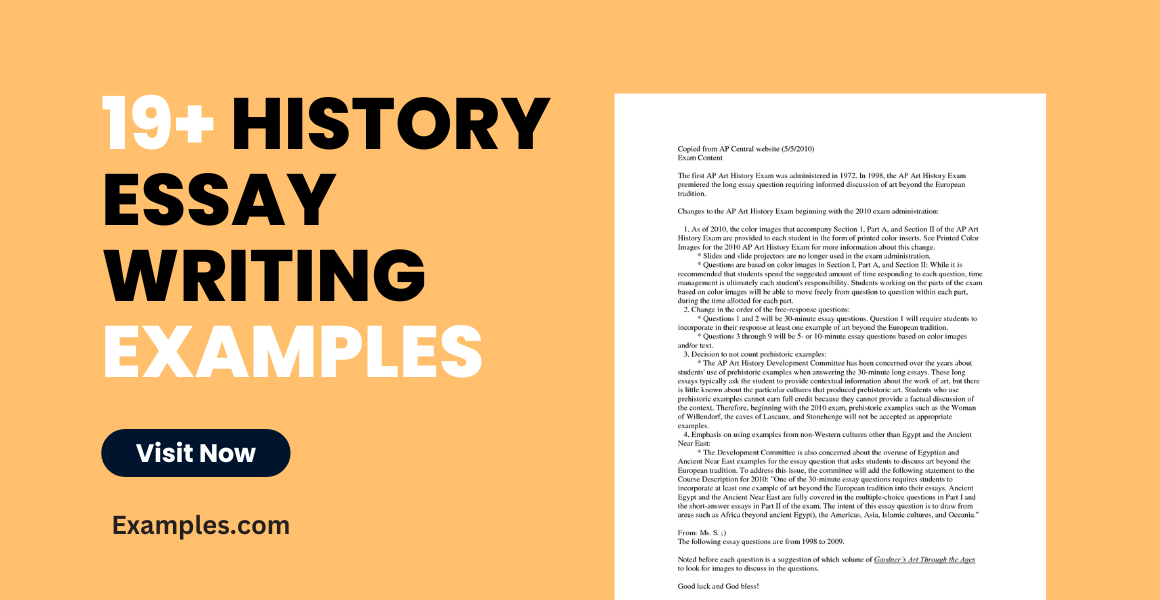
In order to even begin writing an essay , one must first understand on what an essay is and what exactly comprises it. An essay is also a short piece of writing on a particular subject.
- 32+ Free Writing Examples
- 21+ Essay Writing Examples
Just like speeches, essays are normally written by students that serve as their assignments. But unlike general reports , essays allow you to insert your own opinion and explain your justification as to why you think that way. There are many types of essays that students will be asked to write: persuasive, historical, reference, or process essays. Here are some tips as to how to properly write your essay if you need any help whatsoever:
Buy an Art History Essay Writing Paper
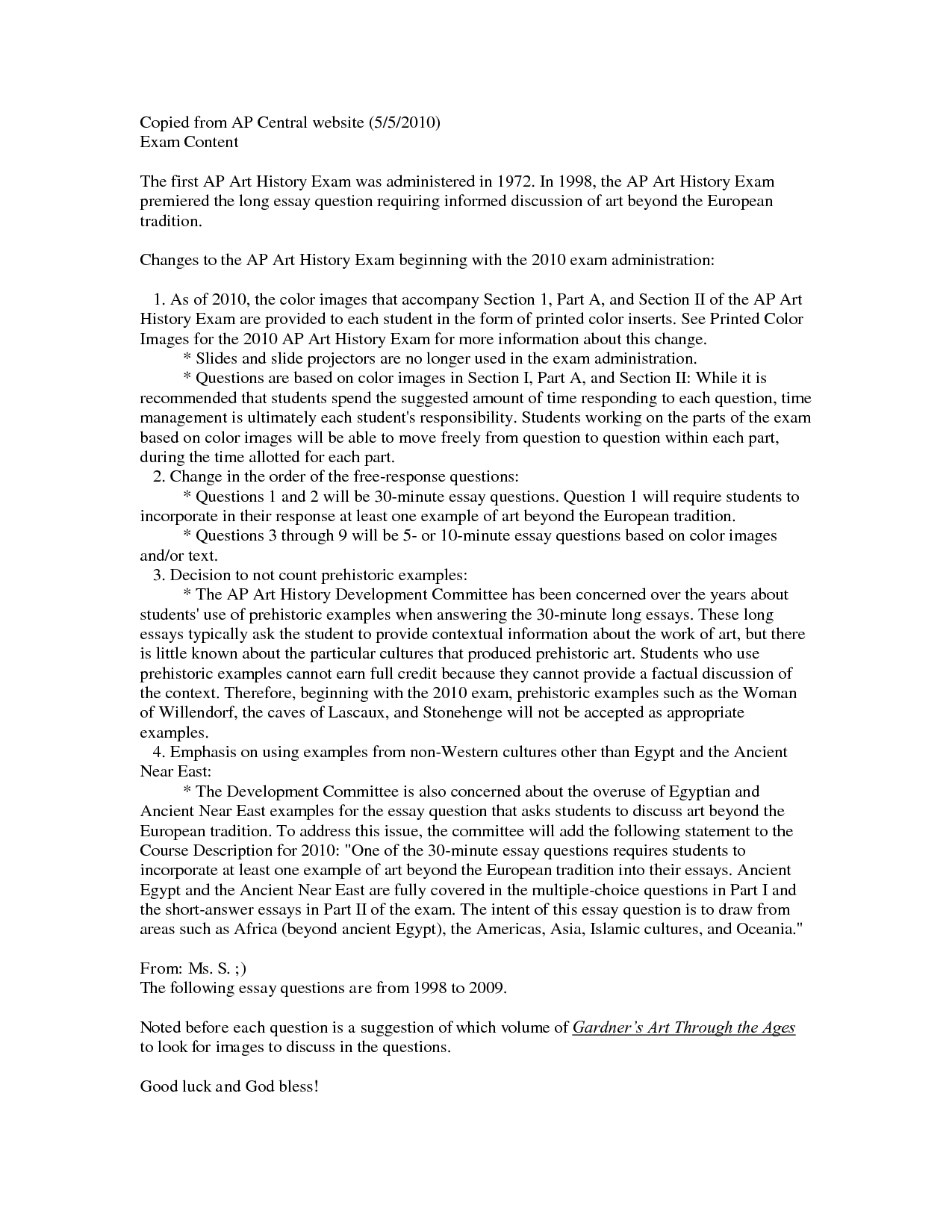
Size: 335 KB
Introduction to American Drama

Size: 96 KB
What Really Caused the Black Death Historical Essay
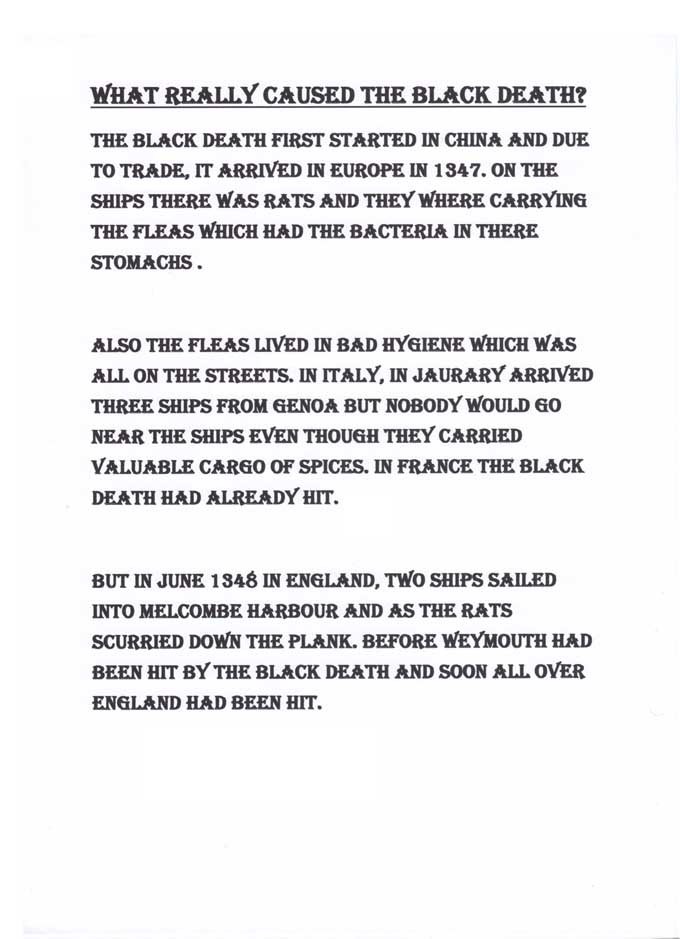
Size: 77 KB
History of the World in Six Glasses Essay Continuation
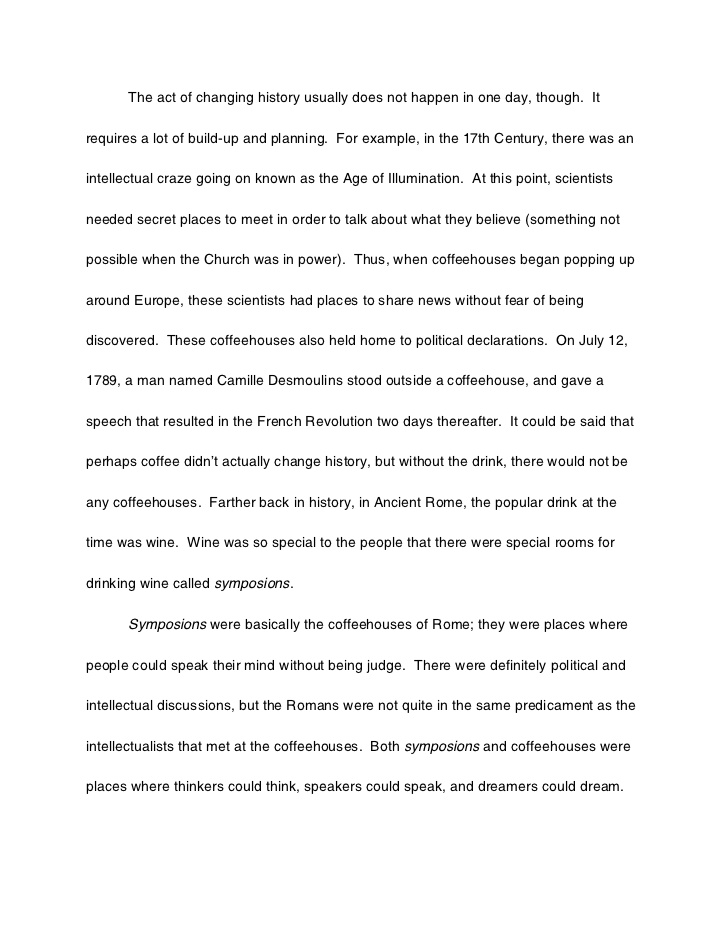
Size: 93 KB

History of the World in Six Glasses Essay Part One
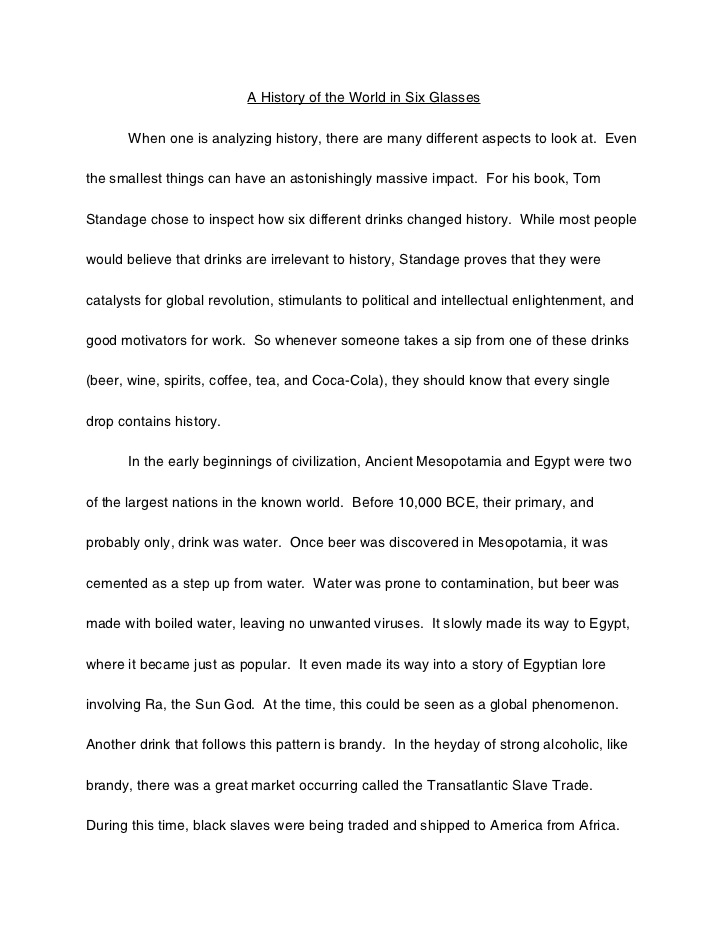
Size: 95 KB
Preparing to Write Your Essay
1. evaluate the essay question..
Before anything else, it is important that you first understand the question. There is the tendency that you may not even be answering the question in the first place.
One of the first things you might notice about the question is that there will be certain key words that should serve as your boundaries for research. If there are certain terms found in the question that you are unsure of, you can always try to look it up online. If you need assistance in identifying the parts of an essay , you may try to look it up by clicking on the hyperlink.
- For example, if the question was “To what extent was the First World War a Total War?” the key terms are “First World War” and “Total War.”
2. Consider what the question is asking you.
As mentioned before, you have to first understand the question that is being asked of you before you can even give your response to it whatsoever. With this in mind, you have to understand that there are different responses depending on the instructions that you are asked to follow. Here are some of the things that a historical essay might ask you to do. If you need check out on how essays are written, you may find out more on free essays . It might just provide you the insight you would need in creating one.
- Explain: provide an explanation of why something happened or didn’t happen. An example of an amazing topic would be on how Martin Luther King Jr. was able to spark a cultural revolution in the eyes of the public and with all of America watching. You may also see what is writing used for ?
- Interpret: analyze information within a larger framework to contextualize it. One topic example that would require interpretation would be on World War II to provide a historical timeline of World War II and who were the parties that were affected by it. You may also like writing examples in PDF .
- Evaluate: present and support a value-judgment. A sample topic for an essay like this would be to present the works of the Trump Administration and as to how it contributed to society’s common good and welfare.
- Argue: take a clear position on a debate and justify it. Normally, the best platform to argue would be in the form of a debate. Argumentative essays are normally posed with an affirmative or negative kind of setting. In light of the recent school shooting events that have transpired all across the U.S., a good essay topic would be, “Should the gun carrying general policy increase its age limit or not?”
3. Try to summarize your key argument.
Before even considering in drafting a key argument, you must first conduct some research of your own. After you have finished researching, you can now formulate your thesis statement that focuses your ideas into one or two sentences. It should present the topic of your paper and must also present your stance in relation to the essay topic.
Thesis statements tell your reader on what the paper is about and can also help guide your writing and keep your argument in point to whatever stance you have decided. Think of it like the main point of your essay, your key arguments should be clear enough that you can structure the essay plan around it. If you need tips on how to draft up an excellent essay , click the hyperlink to find out more.
4. Make an essay plan.
Now that you have successfully followed steps 1 to 3, you can now draft up a plan on how your essay might look like. Compile your research and your notes and develop the structure and the flow of the said essay from there. In the process of doing so, you can actually assess the quality and depth of the evidence you have collected and determine whether your simple thesis statement is adequately supported or not.
In drafting the essay plan, you may want to add some key quotes from notable sources that would actually make the argument more precise and persuasive. When thinking on how your essay will flow, you should also consider on how each point made into the essay will transition and connect with one another. If you need assistance in drafting up a self-introductory essay , you may click on the hyperlink for more information.
Response to Lit Essay Outline

rarerecruitment.co.uk
Size: 59 KB
History of Grenada: Summary of Topic with Underlying Evidence
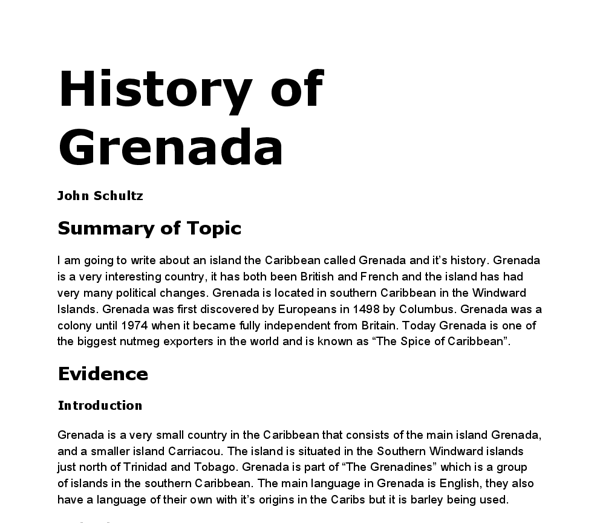
Size: 47 KB
How Do I Write an Essay?
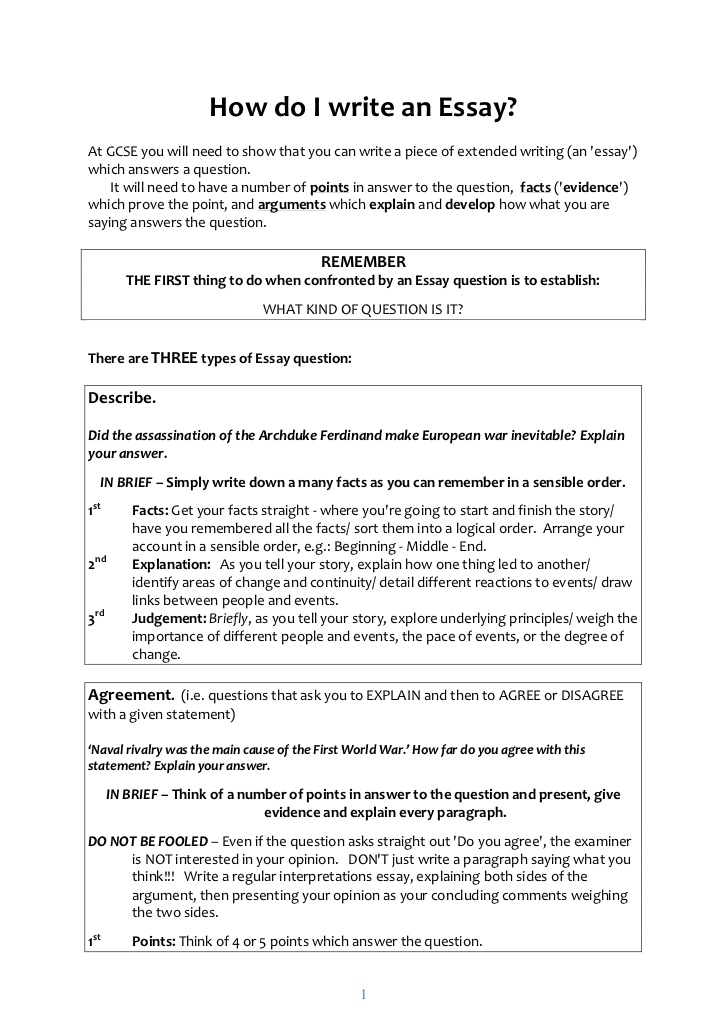
Size: 134 KB
An Essay on American History
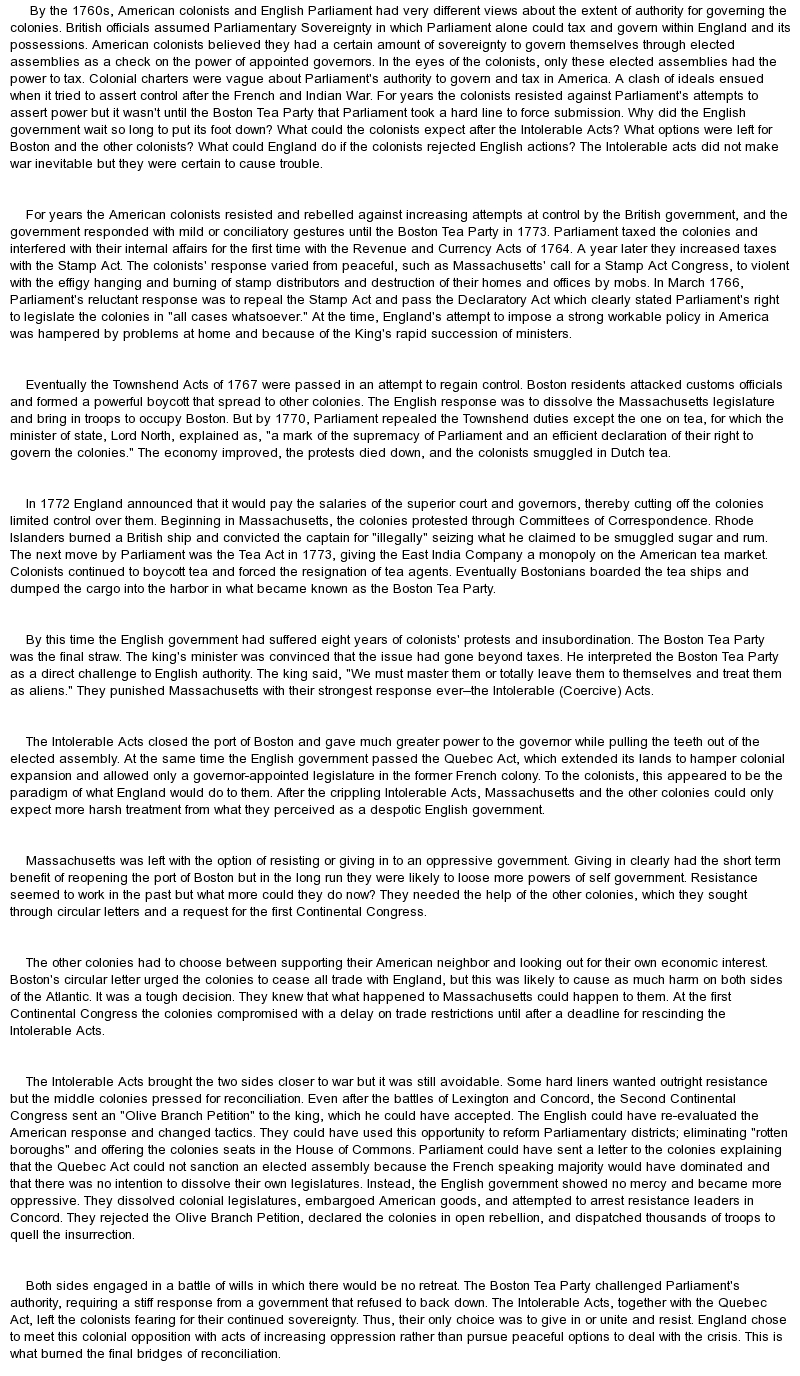
Size: 393 KB
Doing Your Research
1. distinguish between primary and secondary sources..
And since you are writing a history essay, you are expected to include various source materials from different historians who have analyzed and talked about the said events or people who actually witnessed and participated in the said event first hand. You may also see formal writing examples .
The former is called a secondary source while the latter is called a primary source. The most important thing to do in research would be to expend every resource available in order to make your essay more substantial.
Incomplete research is just the same as presenting a haphazardly-done assignment in Math wherein the student ends up guessing every item on the list. Whatever reference you end up obtaining, make sure that you carefully determine what kind of source you are going to be reading. You may also try to write a reflective essay if ever the need arises.
2. Find your sources.
In this age of technological advancement, finding good and credible sources seem to be lacking and incredibly scarce these days. With the rise of fake news and misleading sources and lies and whatnot, how could you filter what is true and what is fake and what could be very good material for your essay? You may also like what do you mean by writing skills ?
Rule number 1 in doing research is to never refer to the Internet directly. It may be the easiest way to find out what you need, but it is not always the most effective method unless you happen to come across some legitimate sources or electronic books or documents in which you can get them for free. Sometimes, the best way is to just go old school and refer to books, magazines, newspaper articles, and others. You may also check out summary writing examples .
As mentioned before, there are many different kinds of essays that you would be asked to make in which one of them includes an analytical essay .
- One tip when doing research in the library or on the Internet would be to look at footnotes and bibliographies as they can guide you to further sources that give you a clearer picture of the important texts.
3. Evaluate your secondary sources.
As aforementioned, good and credible sources these days are hard to come by as you can never really know what information is fake and what information is real.
The bad thing is that primary sources these days are extremely hard to come by. Unless your essay happens to be an autobiography based on the events told by that person, primary sources are extremely hard to locate. Which is why you will just have to put your trust on secondary sources and figure out what sources are considered the best ones that you can rely on. You might be interested in memo writing examples & samples .
Here are some questions that you can try asking when you look for secondary sources. If you are assigned by your teacher to submit a short essay , please click on the hyperlink found on the sentence.
- Who is the author?
- Is it written by an academic with a position at a university?
- Who is the publisher?
- Is the book published by an established academic press?
- If it’s an article, where is published?
4. Read critically.
Once you have found the perfect and the right sources, you are required to read each one critically. You cannot just skim through each of the reference and claim that you have thoroughly read them. But that does not mean that you are required to read every page of that document or book you are assigned to. You may also see report writing examples .
You just have to simply read the important parts and highlight them whenever a specific line or quote strikes you. Reading critically helps increase a person’s thinking ability to ask more discerning and more thought-out questions. For more information, here are at least four effective ways and examples to start your essay .
- First thing you have to do would be to ask yourself as to why the author is making this argument. Learn to evaluate the said text by placing it into a broader intellectual context.
- Ask yourself whether or not it is part of a certain tradition in historiography and is it in response to a particular idea.
- Even the best of key arguments have their own strengths. At some point, you have to consider where there are weaknesses and limitations to the argument.
5. Take thorough notes.
When you conduct your own research, you have to learn to take thorough notes. The main problem among students and researchers alike is when they forget to note them down and immediately place them as reference in their essay or thesis without really taking note on what book it was on or what page number it was on. You may also check out article writing examples & samples .
As consequence, they go back to the library and try to relocate the quote or the said data all over again from the reference. When you see something that strikes you as an important reference or quote to your historical essay, immediately grab a pen and paper and take note of where you can find those references should you decide to include them in the essay or presentation. Writing formal essays can be a bit of challenge if you do not know how or where to even begin.
Language, History, and Change Essay
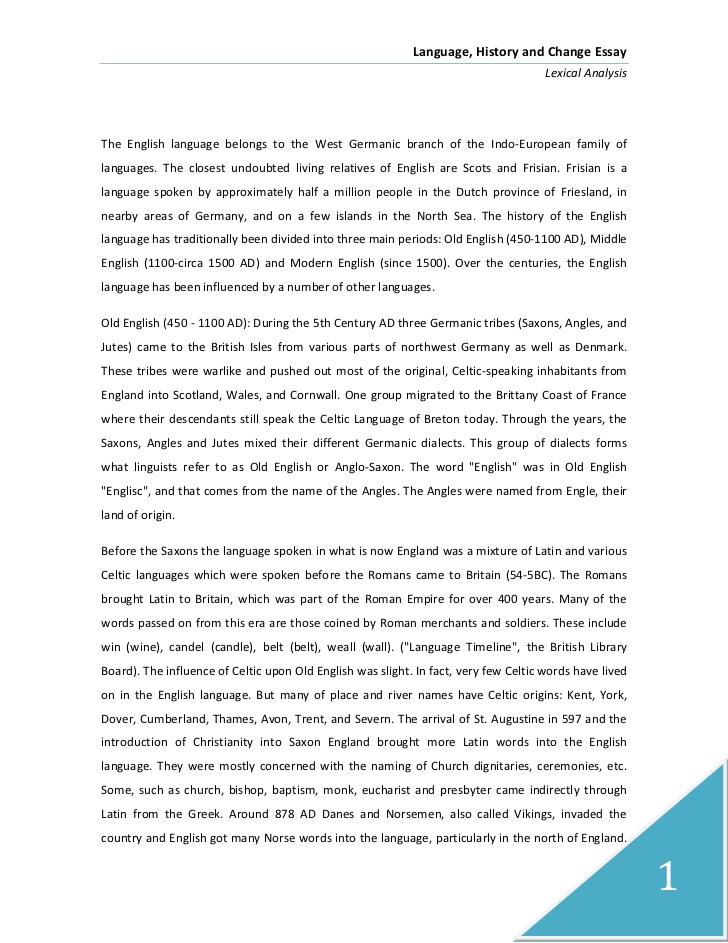
Size: 140 KB
History of Nagpur Part One Essay Example
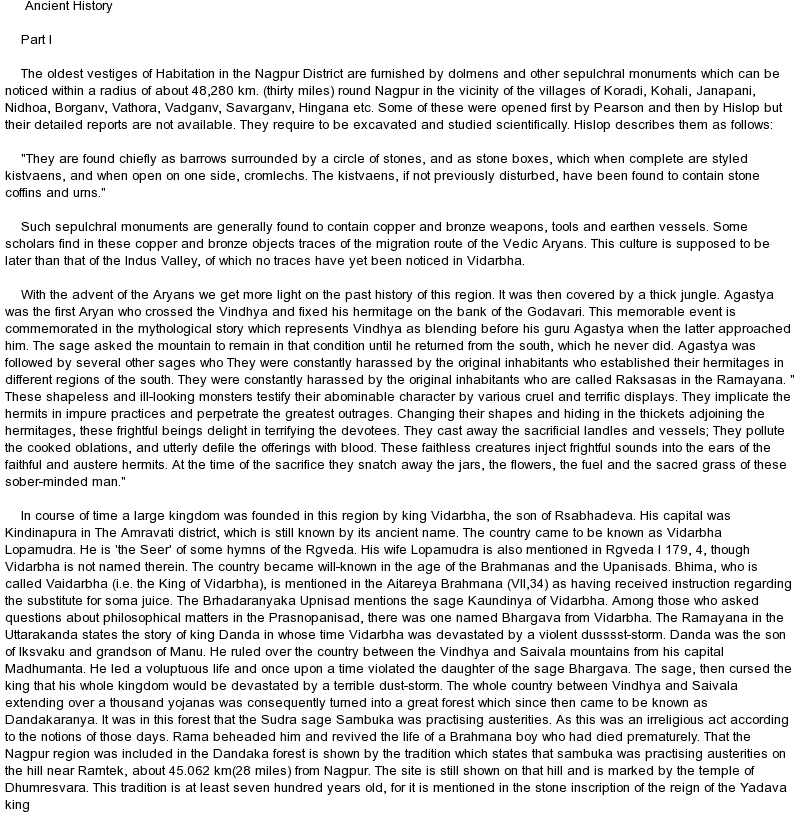
Size: 252 KB
Hist 2C: Family History Essay
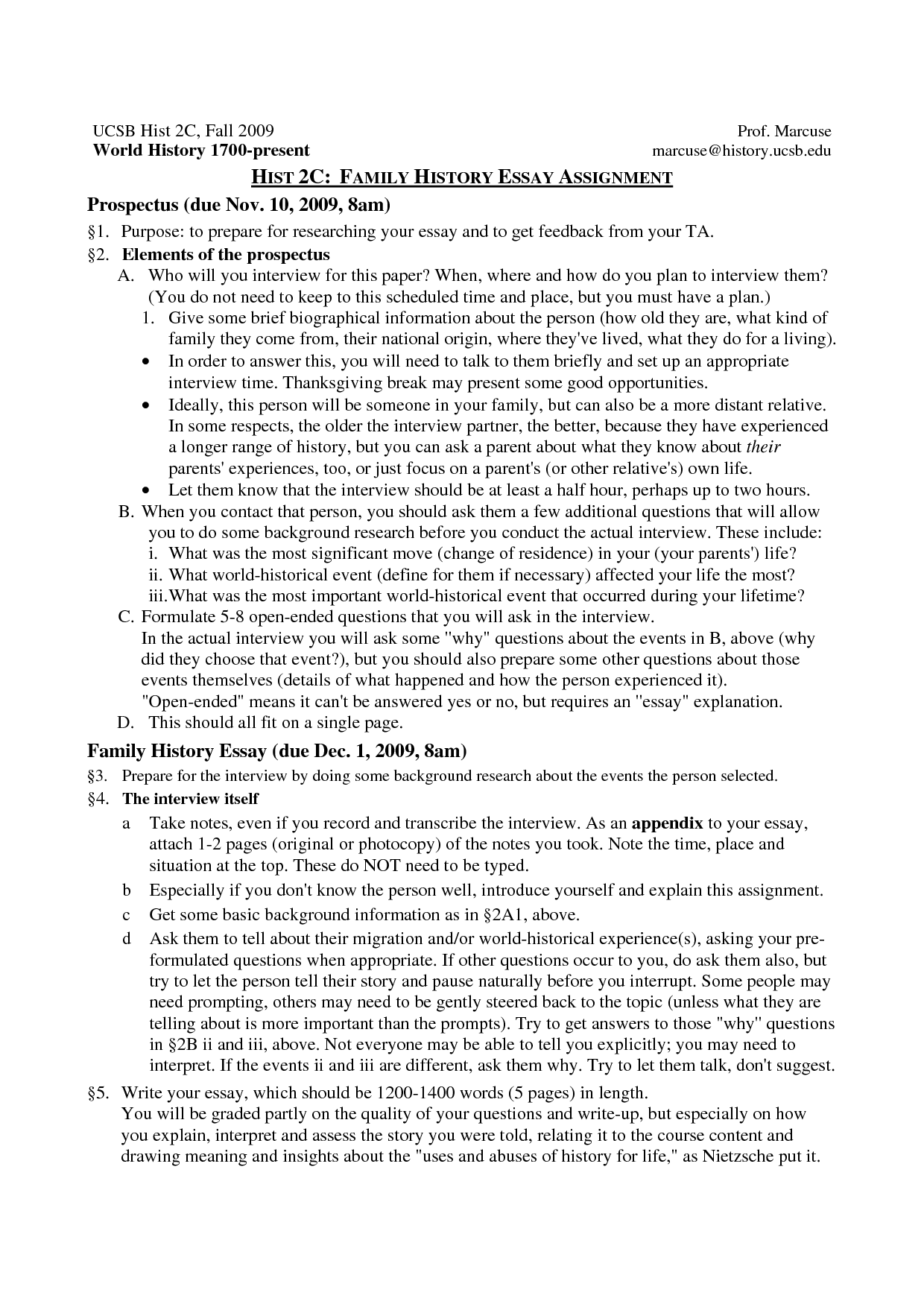
Size: 419 KB
Essay on Slavery and the South
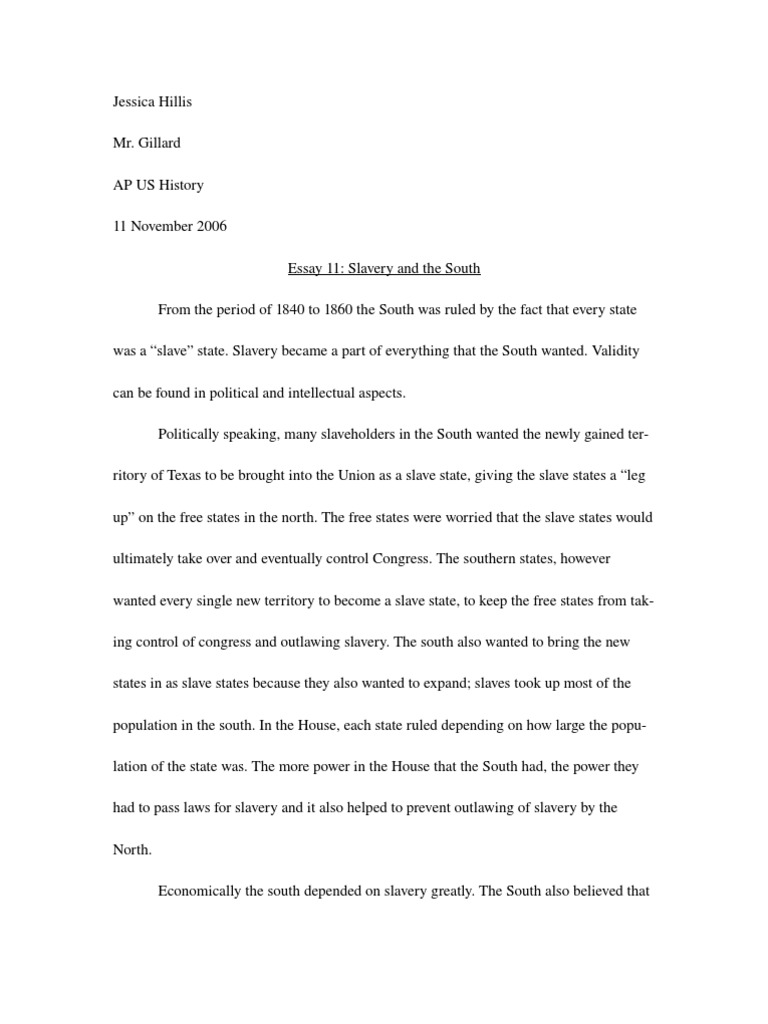
imgv2-1-f.scribdassets.com
Size: 63 KB
Writing the Introduction
1. start with a strong first sentence..
Speeches sometimes open with a joke or a story. Same thing applies when you give an oral report in front of the classroom or the board. But that is not the case in a historical essay.
Since it is not going to be delivered orally, the best opening you can start in a historical essay is with a quote from the source material. It can either be related to the said event or not. But one thing for certain is that the first few sentences even in an essay can change the perceptions of the one reading them if done correctly. You may also see writing examples in doc .
Historical essays are not often a pleasant read especially to the general audience. But if you can appeal to the masses in one way or another, then your essay might even change the lives of people without you knowing about it. For more examples, you may refer to essay writing examples .
2. Outline what you are going to argue.
Just like speech writing, you need to come up with an outline in order to determine where you are going to place your key or main arguments in your essay.
Keep in mind that all the points have to act as a transition in one way or another. Maybe not in a chronological order, but in a sense you have to make certain that each point you indicate in your essay would transition itself so that all the points could correlate with one another. For instance, the moment you move on from point A to point B, people would then understand on why point B happened because of point A. You may also like application writing examples .
In that said outline, you can also mention some quotes and some thesis statements that can paint a more detailed outline which often results into a more developed speech. Personally, perhaps the best kind of essay there is to write is an argumentative essay as you can easily insert your opinions there as long as you have the facts straightened out.
3. Provide some brief context for your work.
Depending on the type of essay you are writing, it will be necessary to provide a brief overview of the main historiographical debates for your topic. It is important to demonstrate that you have a good understanding of what other historians have written about your topic, and be able to situate your own argument within this broader context. You may also check out some tips that you might need for your narrative essay or thesis if you need to write one.
Building a History Essay Burger
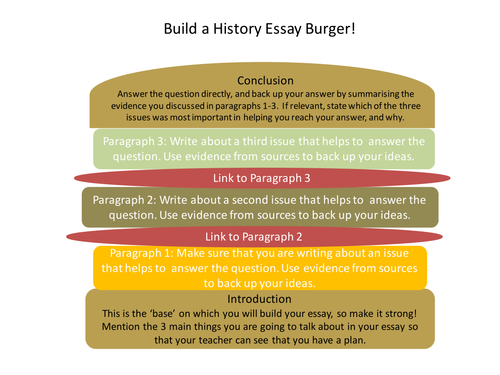
dryuc24b85zbr.cloudfront.net
Women in History Essay Example

Size: 195 KB
Making a History Essay
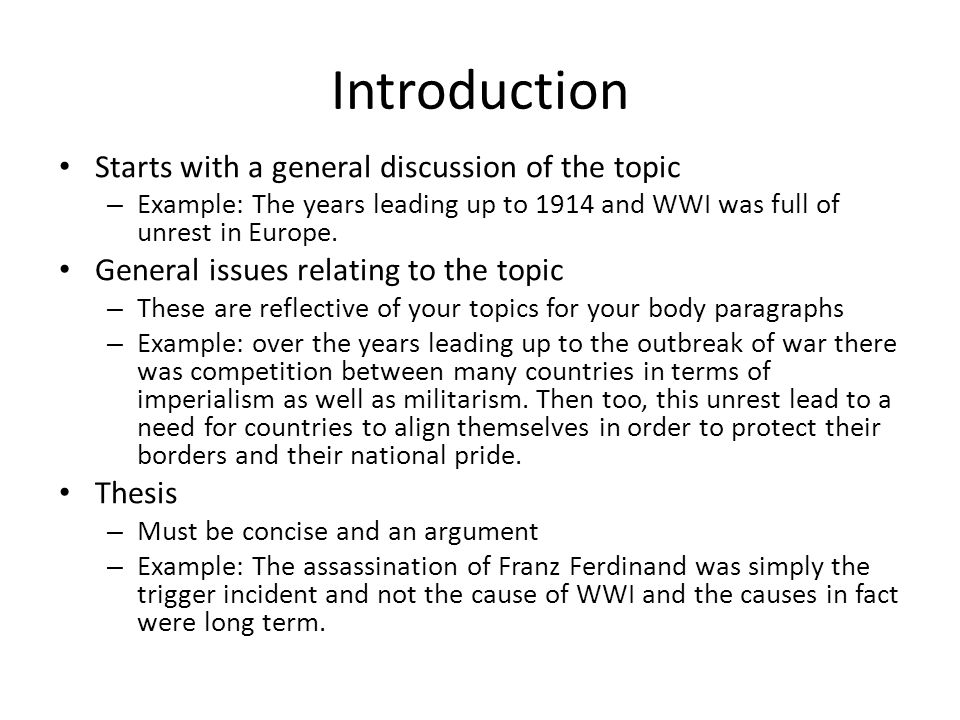
Size: 100 KB
American History X Example Essay
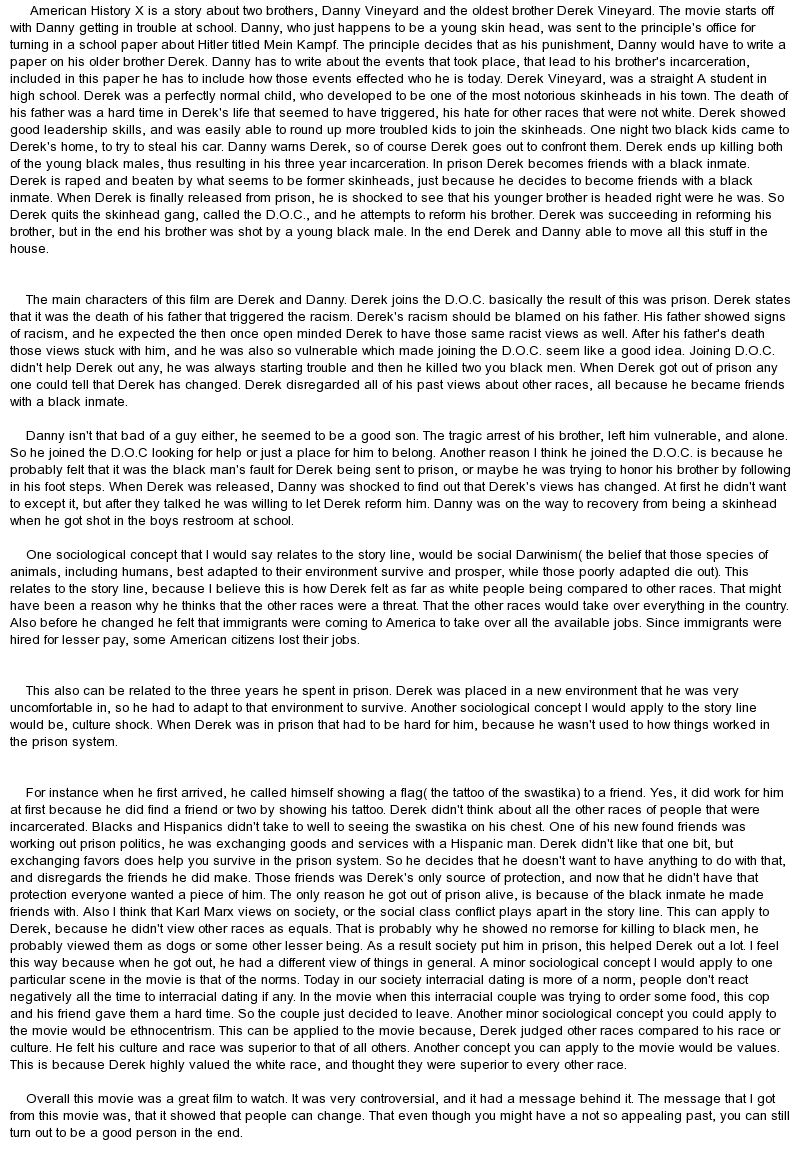
Size: 359 KB
Writing the Essay
1. have a clear structure..
When you come to write the body of the essay, it is important that you have a clear structure to your argument and to your prose. If your essay drifts, loses focus, or becomes a narrative of events, then you will find your grade dropping. Your introduction can help guide you if you have given a clear indication of the structure of your essay. Sometimes, you would be required to write academic essays for your school assignment. If that is the case, you may want to refer to some examples that can help you out with that.
2. Develop your argument.
The body of the essay is where your argument is really made and where you will be using evidence directly.
Think carefully about how you construct your paragraphs, and think of each paragraph as one micro-sized version of the essay structure. In other words, aim to have a topic sentence introducing each paragraph, followed by the main portion of the paragraph where you explain yourself and draw on the relevant evidence. As aforementioned, you may be required to write up different essays for your schoolwork. But concept essays are not particularly common.
3. Use source material appropriately.
This is where your source material will come to big use. All that research and data that you have collected over time will finally be reflected in the essay.
But you have to understand that not every source material that you obtain from books or the Internet is going to work out the way you want it as it does have the tendency to contradict, which might eventually raise questions from the teachers. Although source material is important, you only have to choose the cream of the crop quotes and reference material. You may also see 5-step basic guide on essay writing .
Try to limit it to only one quote per point as too many quotes will often be considered redundant. Scholarships have their essays that need making in order to convince the school board to grant that particular scholarship to the applicant. You may also like script writing examples .
4. Conclude succinctly.
Have you heard of the quote “Start strong and end strong”? If you manage to attract to the audience’s appeal in the introduction part of the essay, it is only fitting to conclude in the same manner.
Whether you decide to end with a quote or something, make sure to leave your audience more engaged and more learned than before. Good conclusions summarize your argument and key points. You need to ensure your conclusion reflects the content of your essay, and refer back to the outline you provided in the introduction. You may always refer to essay writing examples for more insight and details.
Comparison and Contrast of Soldiers Home
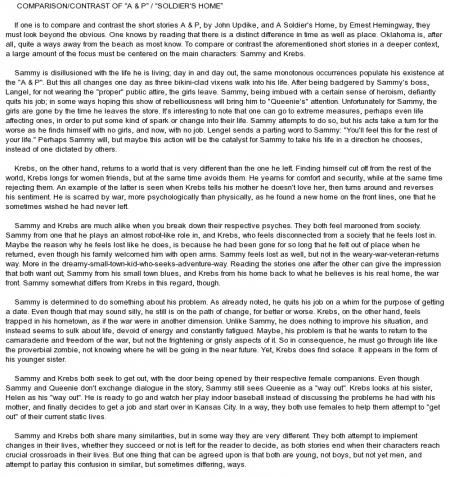
keetoncustomgolf.com
Size: 79 KB
My Hero In History Essay
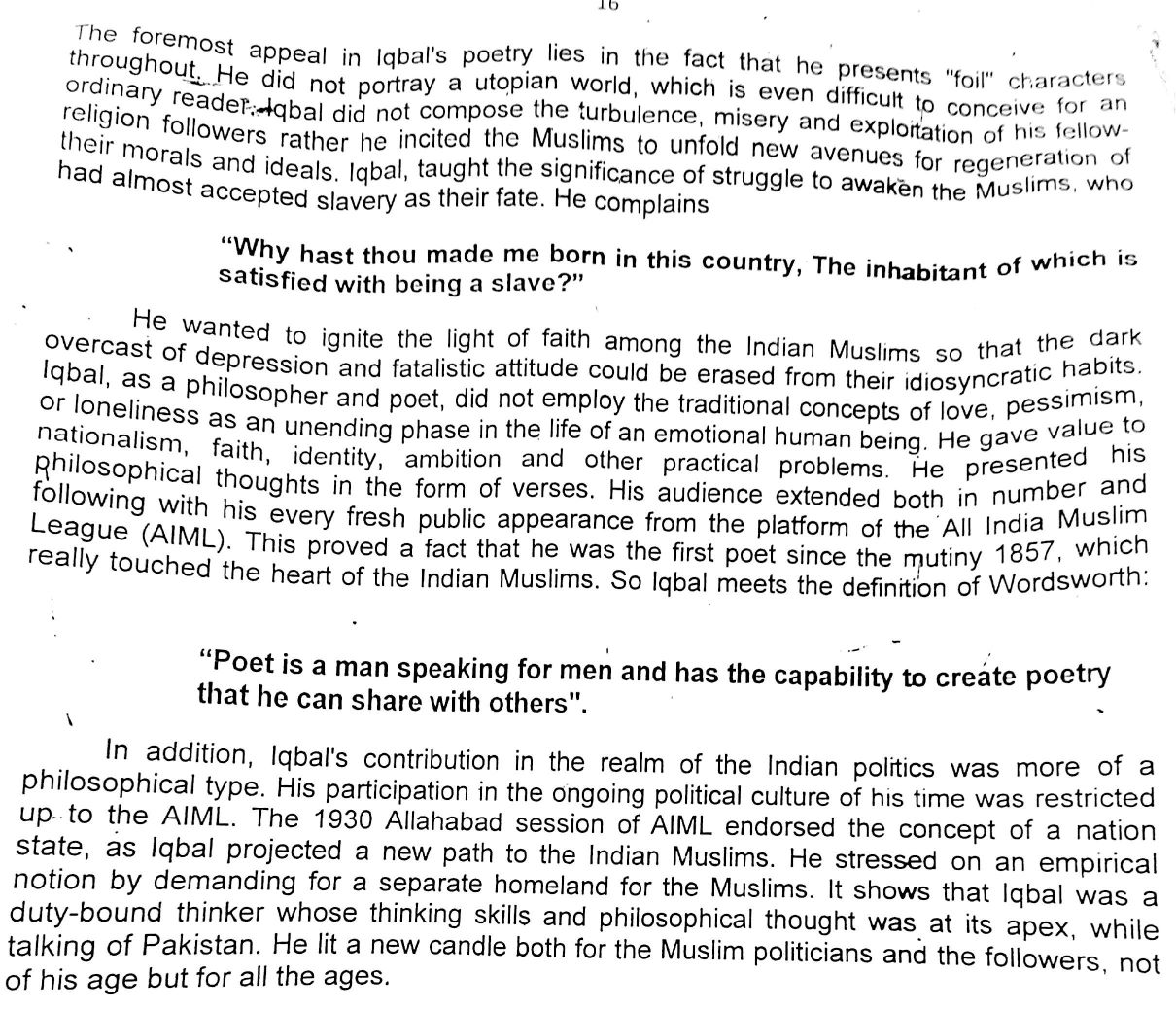
Size: 302 KB
An Approach to African through Architecture

Size: 168 KB
Proofreading and Evaluating Your Essay
1. proofread your essay..
After writing your essay, you are entailed to proofread your essay in order to make it sound and seem professionally done. Make sure that your essay is clear of typographical and grammatical errors. If ever the structure of the essay seems out of place or the content itself might be lacking, you can always revisit your essay and make the necessary changes to what you see fit. You may also see informative writing examples .
2. Analyze, don’t describe.
One thing to look out for when you read through your history essay is whether or not you have allowed any overly descriptive passages to creep in. Remember a history essay is an analysis and not just a narrative of events. History students can find themselves re-telling a series of events rather than analyzing them and the historiographical debates about them. Some people often have problems drafting outlines, especially when it comes to essay outlines .
3. Check your references and bibliography.
In making a thesis, it is important that you have a separate page for references and for bibliography. Without them, you could be accused for plagiarism and you would not want that on your record. There is a certain way to format your sources, so make sure you ask your instructor first on what formatting style needs to be used before anything else. You may also like minutes writing examples .
History Essay Writing Generator
Text prompt
- Instructive
- Professional
Write a history essay writing topic on the causes and effects of World War II.
Develop a history essay writing subject on the impact of the Industrial Revolution on society.

COMMENTS
Tips for Effectively Using History Essay Examples. Analyze the Structure: Pay close attention to how the essay is organized, including the introduction, body paragraphs, and conclusion. Look for how the author transitions between paragraphs and the use of evidence to support their argument. Study the Thesis Statement:
Common Types of History Papers History papers come in all shapes and sizes. Some papers are narrative (organized like a story according to chronology, or the sequence of events), and some are analytical (organized like an essay according to the topic's internal logic). Some papers are concerned with history (not just what happened,
Body paragraph 1: Introduction to the Historical Context. Provide background information on the historical context of your topic. Highlight key events, figures, or developments leading up to the main focus of your history essay. Body paragraphs 2-4 (or more): Main Arguments and Supporting Evidence.
Many history students fall into the trap of writing short paragraphs, sometimes containing as little as one or two sentences. ... For example, an essay discussing Hitler's rise to power in 1933 might close with a couple of sentences about how he consolidated and strengthened his power in 1934-35. ... A history essay is only likely to succeed ...
1. Background sentences. The first two or three sentences of your introduction should provide a general introduction to the historical topic which your essay is about. This is done so that when you state your hypothesis, your reader understands the specific point you are arguing about. Background sentences explain the important historical ...
this, history essays are more than narrative accounts of the past. The purpose of a history essay is to communicate useful conclusions about past events in a purposeful and persuasive manner. History essays that are mere narratives of historical events without being analytical are, therefore, of limited value. Analytical essays are also called
Example of a Conclusion in a History Essay. 📝 4 Easy Steps for Writing a Great History Essay. 📌 Step 1: Preparation. 🎬 Step 2: Stage Setup. ️ Step 3: Writing an Initial Draft. 📝 Writing an Introduction Paragraph for a History Essay. 📝 Writing Body Paragraphs for a History Essay.
Download Article. 1. Have a clear structure. When you come to write the body of the essay it is important that you have a clear structure to your argument and to your prose. If your essay drifts, loses focus, or becomes a narrative of events then you will find your grade dropping.
Essays are an essential educational tool in disciplines like history because they help you to develop your research skills, critical thinking, and writing abilities. The best essays are based on strong research, in-depth analysis, and are logically structured and well written. An essay should answer a question with a clear, persuasive argument.
Step 1: Understand the History Paper Format. You may be assigned one of several types of history papers. The most common are persuasive essays and research papers. History professors might also ask you to write an analytical paper focused on a particular source or an essay that reviews secondary sources.
Often in student history papers, the thesis incorporates the main primary source into the argument. For example, "As his journal and published correspondence between 1861 and 1864 reveal, Colonel Mustard believed that a few timely shifts in Tennessee's weather could have altered the outcome of the war."
Make it Shine. An A-level essay takes planning and revision, but it's achievable. Firstly, avoid procrastination and start early. Secondly, leave yourself plenty of time to brainstorm, outline, research and write. Finally, follow these five tips to make your history essay shine: Write a substantial introduction.
A history essay typically evokes and analyzes important events from the past or even tries to predict the future by analyzing our past. History also contains valuable information about human nature and typical mistakes that individuals, communities, or societies tend to make - while every age has its own specific circumstances, at the very ...
The constitution is around 6000 thousand words which lays down the basic details about the four principles it is made of. This allows room for the document to be interpreted to met the needs of the changing time without loosing its meaning or altering the original intent of the founders. This is made possible by the mandate of the US Supreme ...
United States History and Government (Framework) Content-Specific Rubric Short-Essay Question Set 1 (Question 29) June 2023 Scoring Notes: 1. This short-essay question has two components (describing the historical context surrounding these two documents, and identifying and explaining the relationship between the events and/or ideas found in
Narrative history establishes the identity of their authors and readers. Narrative histories are may be about a story of a family, community, experience of a person, etc. It gives credits to the authors and provides life with the information to the readers. Narrative history represent language and literature. It makes reading available and easy ...
110 Original History Essay Questions: Examples and Topics. by IvyPanda Updated on: Nov 8th, 2023. 9 min. 29,519. When looking for history essay topics, people often think about the world-famous military and political events. However, there is so much more to history than battles and international affairs.
Below, we provide some student samples that exhibit the key features the most popular genres. When reading through these essays, we recommend paying attention to their. 1. Structure (How many paragraphs are there? Does the author use headers?) 2. Argument (Is the author pointing out a problem, and/or proposing a solution?) 3.
History Essay Writing. In order to even begin writing an essay, one must first understand on what an essay is and what exactly comprises it. An essay is also a short piece of writing on a particular subject. 32+ Free Writing Examples; 21+ Essay Writing Examples; Just like speeches, essays are normally written by students that serve as their ...
This essay begins by discussing the situation of blind people in nineteenth-century Europe. It then describes the invention of Braille and the gradual process of its acceptance within blind education. Subsequently, it explores the wide-ranging effects of this invention on blind people's social and cultural lives.
Cheap Business Essay Writing Services. Before being accepted into our company, we underwent extensive background checks. Check their credentials to confirm that they have been writing professionally for some time. If they are members of professional associations, check, for instance. Some students may have difficulty completing their research ...
Short Essay Writing on My Ambition in Life (200 Words) Ambition is a goal or objective to achieve in life. In order to succeed in life, one must have a goal. An aimless man is like a ship without a compass. So, I have to select an ambition in my life. Very soon I shall be a citizen of my country.